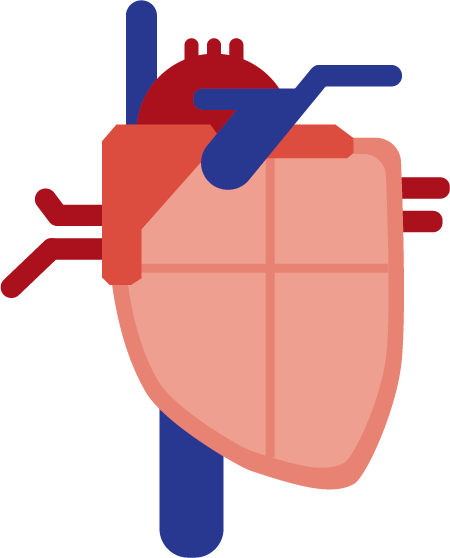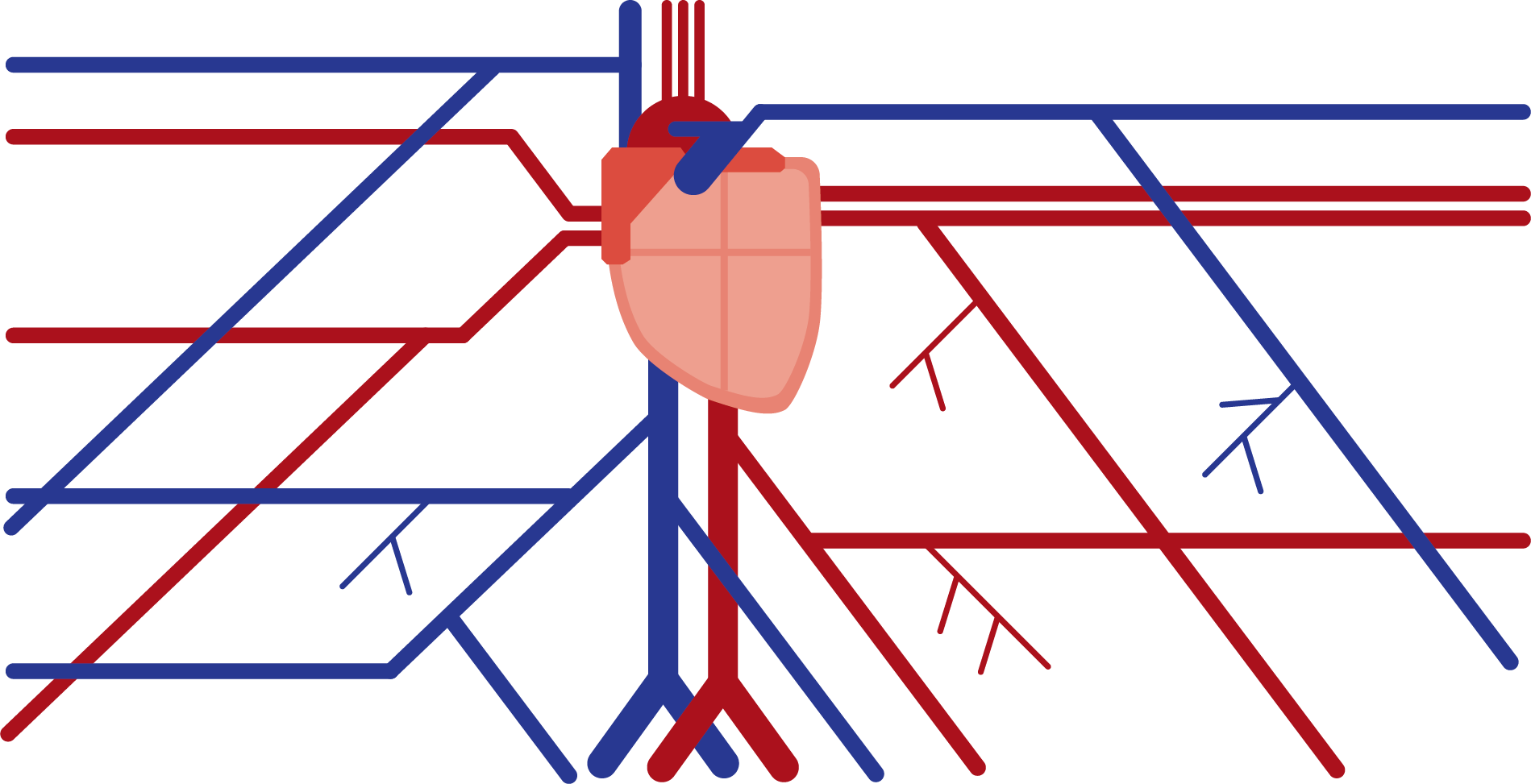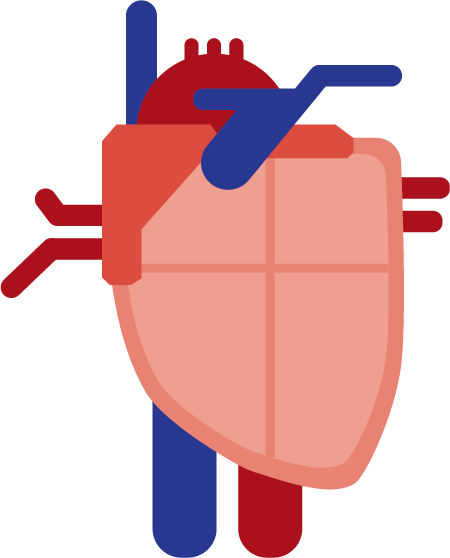


The heart is a muscular organ about the size of a fist, located just behind and slightly left of the breastbone. The heart pumps blood through the network of arteries and veins called the cardiovascular system.
The human heart has four chambers: two upper chambers (the atria) and two lower ones (the ventricles). The right atrium and right ventricle together make up the "right heart," and the left atrium and left ventricle make up the "left heart."













The circulatory system is a vast network of organs and vessels that is responsible for the flow of blood, nutrients, hormones, oxygen and other gases to and from cells.The heart, blood, and blood vessels make up the cardiovascular component of the circulatory system.

The heart circulates blood through two pathways: the pulmonary circuit and the systemic circuit. Veins carry blood to the heart and arteries carry blood away from the heart to the rest of the body. The right heart pumps deoxygenated blood to the lungs. The lungs return oxygenated blood to the left heart. After arriving at the left heart the blood travels through the aorta to the rest of the body.









